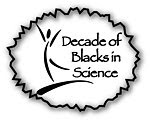The Saint Louis Zoo has an online activity to help kids learn more about animals and conservation efforts around the world.
Introducing Club Conservation
Club Conservation is a new a way for kids to become part of the solution and make a tangible difference for animals and people in other countries. What started as a letter exchange between a school in Kenya and a school in Kirkwood, Missouri has expanded into after-school conservation clubs in both locations.
The Saint Louis Zoo is hoping to get other schools involved, and for kids to learn on their own and in groups. A new section on our website, devoted solely to kids, will focus on our conservation work, but also give children options on how they can help.
Soon, each center of the WildCare Institute will have a set of pages dedicated to their flagship species, as well as information on the geography of the region, how the Zoo is helping and ways for kids to get involved. Check out our first installment with the Center for the Grevy's Zebra in the Horn of Africa and see how you, and your kids, can get involved in animal conservation!
Have fun!!
Tuesday, November 21, 2006
Online Activity for Kids
Friday, November 17, 2006
Importance of Scientific Literacy. Part 2
I am a member of the world's largest Scientific Society, AAAS. AAAS is the American Association for the Advancement of Science. It is an international non-profit organization dedicated to advancing science around the world by serving as an educator, leader, spokesperson and professional association. In addition to organizing membership activities, AAAS publishes the journal Science, as well as many scientific newsletters, books and reports, and spearheads programs that raise the bar of understanding for science worldwide.
Scientific Literacy is very important and increasing the public's understanding of science and issues related to science is one of the purposes of Urban Science Adventures. However, the first hurdle is addressingthe Public Relations problem Science has in Society's eyes. Coincidentally, the most recent on-line newsletter, AAAS in Action, address this issue. Below are two snippets from the newsletter. Follow the links to read more in-depth.
A New Vision for Engaging the Public in Science Issues "Simply lamenting the tension or protesting attacks on the integrity of science and science education won’t work," wrote AAAS CEO Alan I. Leshner in a commentary published in The Chronicle of Higher Education on 10 October . Rather, to overcome public skepticism on issues ranging from climate change to stem cell research, science organizations and individual scientists must reach out to local news media and religious, community, and school groups. Read about a workable new approach to public engagement: https://email.umsl.edu/exchweb/bin/redir.asp?URL=http://www.members-aaas.org/util/link.jsp?cid=2%26track_id=96%26link_id=8246%26subscriber_id=156926. "Framing" is Shaping Science Policy Debate A mid-October seminar sponsored by AAAS Science and Policy and the Washington Science Policy Alliance examined how humans, as "cognitive misers," seek shortcuts for understanding massive amounts of information including embryonic stem cell research, climate change, and the teaching of evolution. Political strategists, scientists, and the news media can take advantage of our tendency to create mental shortcuts and influence public opinion using thought organizers, or "frames," which package complex information by focusing on certain interpretations, according to Matthew Nisbet, an assistant professor in the School of Communication at American University . Read more and watch the PowerPoint presentation: https://email.umsl.edu/exchweb/bin/redir.asp?URL=http://www.members-aaas.org/util/link.jsp?cid=2%26track_id=96%26link_id=8247%26subscriber_id=156926.
Happy information hunting,
DNLee
Thursday, November 16, 2006
George & Martha - the nation's first couple (of bald eagles)
The Washington Post featured several stories about the pair this summer.
(April 2006-October 2006)
Story 1:
Story 2a:
Story 2b:
Story 2c:
Story 3a:
Story 3b:
More Info about George & Martha and the Bridge they called home
http://www.wilsonbridge.com/ea-WilEagles.htm
Thursday, November 09, 2006
Interesting visitors - Manatees in the Mississippi River
As strange as this may sound, even sharks have found their way far north up the Mississippi River. Some have even been sited in St. Louis, Missouri. Bull sharks are able to survive in marine, or salt water, and freshwater environments. Read here to learn more about Bull sharks and their occasional journeys north.























